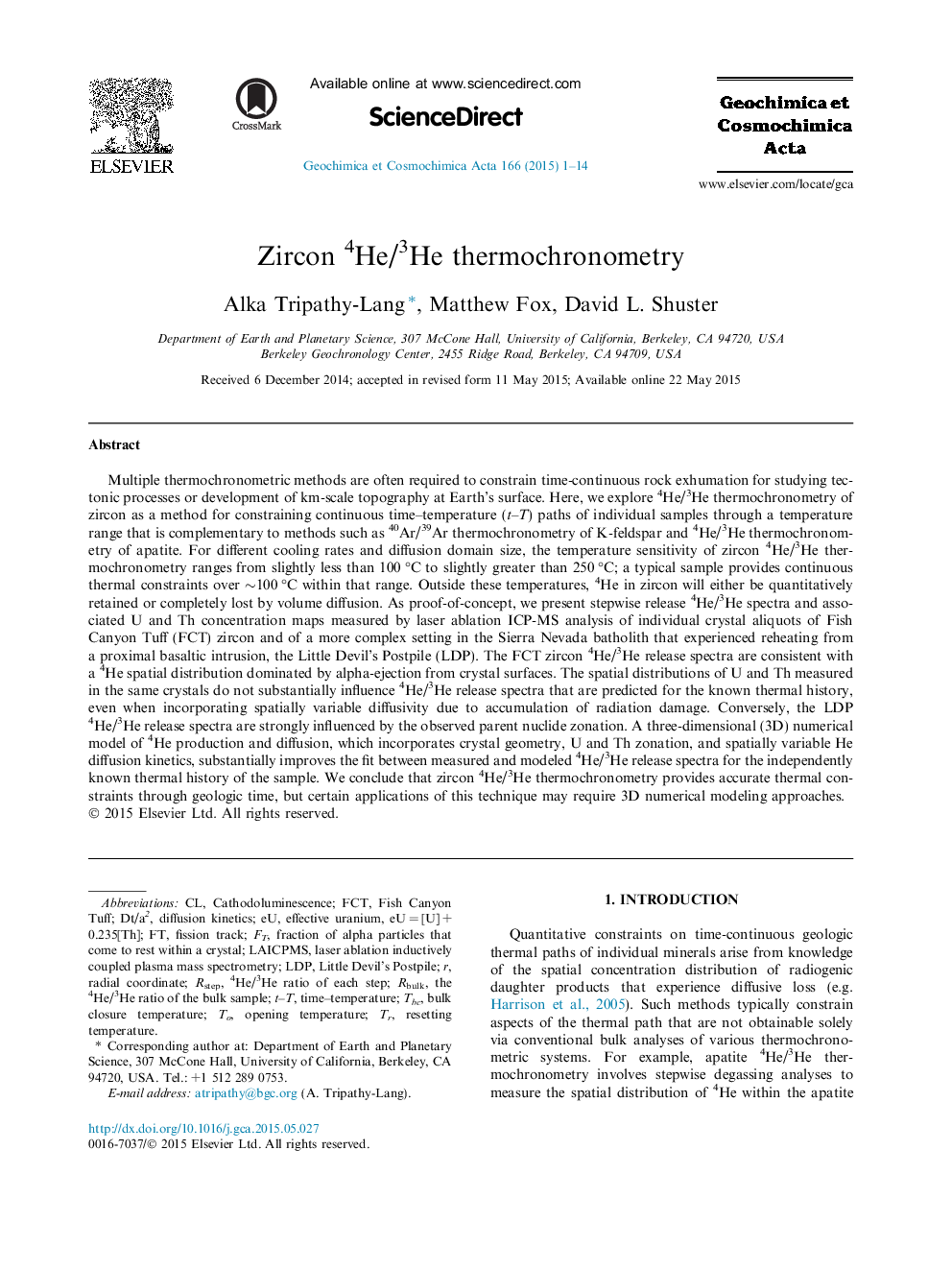| کد مقاله | کد نشریه | سال انتشار | مقاله انگلیسی | نسخه تمام متن |
|---|---|---|---|---|
| 6437798 | 1637991 | 2015 | 14 صفحه PDF | دانلود رایگان |
عنوان انگلیسی مقاله ISI
Zircon 4He/3He thermochronometry
دانلود مقاله + سفارش ترجمه
دانلود مقاله ISI انگلیسی
رایگان برای ایرانیان
کلمات کلیدی
موضوعات مرتبط
مهندسی و علوم پایه
علوم زمین و سیارات
ژئوشیمی و پترولوژی
پیش نمایش صفحه اول مقاله

چکیده انگلیسی
Multiple thermochronometric methods are often required to constrain time-continuous rock exhumation for studying tectonic processes or development of km-scale topography at Earth's surface. Here, we explore 4He/3He thermochronometry of zircon as a method for constraining continuous time-temperature (t-T) paths of individual samples through a temperature range that is complementary to methods such as 40Ar/39Ar thermochronometry of K-feldspar and 4He/3He thermochronometry of apatite. For different cooling rates and diffusion domain size, the temperature sensitivity of zircon 4He/3He thermochronometry ranges from slightly less than 100 °C to slightly greater than 250 °C; a typical sample provides continuous thermal constraints over â¼100 °C within that range. Outside these temperatures, 4He in zircon will either be quantitatively retained or completely lost by volume diffusion. As proof-of-concept, we present stepwise release 4He/3He spectra and associated U and Th concentration maps measured by laser ablation ICP-MS analysis of individual crystal aliquots of Fish Canyon Tuff (FCT) zircon and of a more complex setting in the Sierra Nevada batholith that experienced reheating from a proximal basaltic intrusion, the Little Devil's Postpile (LDP). The FCT zircon 4He/3He release spectra are consistent with a 4He spatial distribution dominated by alpha-ejection from crystal surfaces. The spatial distributions of U and Th measured in the same crystals do not substantially influence 4He/3He release spectra that are predicted for the known thermal history, even when incorporating spatially variable diffusivity due to accumulation of radiation damage. Conversely, the LDP 4He/3He release spectra are strongly influenced by the observed parent nuclide zonation. A three-dimensional (3D) numerical model of 4He production and diffusion, which incorporates crystal geometry, U and Th zonation, and spatially variable He diffusion kinetics, substantially improves the fit between measured and modeled 4He/3He release spectra for the independently known thermal history of the sample. We conclude that zircon 4He/3He thermochronometry provides accurate thermal constraints through geologic time, but certain applications of this technique may require 3D numerical modeling approaches.
ناشر
Database: Elsevier - ScienceDirect (ساینس دایرکت)
Journal: Geochimica et Cosmochimica Acta - Volume 166, 1 October 2015, Pages 1-14
Journal: Geochimica et Cosmochimica Acta - Volume 166, 1 October 2015, Pages 1-14
نویسندگان
Alka Tripathy-Lang, Matthew Fox, David L. Shuster,